The herbaceous perennial plant Ixia is a member of the Iris family. According to information taken from various sources, there are from 40 to more than 60 different species in this genus. This plant comes from South Africa, namely, from the Cape region. The scientific name of this genus comes from the Greek word, which means "bird glue", meaning the sticky sap of the plant. This flower began to be cultivated in the 18th century. To date, the most widespread varieties are Ixia, which are hybrids, they have a common name - Ixia hybrid. At the same time, the species ixia are becoming less popular every year.
Content
Ixia features
Ixia is a bulbous plant, the height of which can vary from 0.15 to 0.7 m. The shoots are thin. Narrow linear long leaf plates are xiphoid and two-row. On the peduncle, about 10 wide open flowers grow, reaching from 25 to 50 mm in diameter. The flowers include 6 petals of red, yellow, white or pink color, while closer to the middle the color becomes more saturated and dark, for example: black, dark red or brown. Flowering is observed in the last spring weeks or the first - summer. At night, as well as in cloudy weather, the flowers of this plant do not open. The flowers have a not very strong, but rather pleasant smell, which is attractive to various insects, for example, to bees.
Ixia planting in open ground
What time to plant
If Ixia is grown in areas with sufficiently warm and mild climatic conditions, then its planting in open soil can be carried out in spring (from the last days of April to the first days of May) or in autumn (in November). Since the planting material of this plant dies at a temperature of less than minus 1-2 degrees, then in middle latitudes, as well as in colder regions, it is planted only in spring.
Each season for planting ixia, it is recommended to choose a new site, which serves as a good prevention against diseases and pests. A site should be chosen well-lit, located away from trees, and also protected from gusts of wind. Ixia grows best in fertile, neutral soil saturated with humus.Those areas where there is stagnation of liquid are not suitable for planting.
Landing rules
First you need to carefully prepare the site for planting. To do this, they dig it up with the introduction of compost, as well as leveling the surface. It is recommended to add sand to heavy soil.
Go through the planting material. It is recommended to plant only elastic and dense bulbs, and all dryish, soft and moldy bulbs are subject to rejection. Make holes and cover their bottom with a layer of nutritious soil, while taking into account that the bulb is buried in the ground by 50–80 mm. When planting corms, a distance of 10–12 centimeters is observed between the holes, and when planting divins and children - from 8 to 10 centimeters. The planted plants do not need to be watered, but the surface of the site must be immediately covered with a layer of organic mulch, the thickness of which should be from 20 to 30 mm. In the current season, the first flowering can only be observed in those plants that have grown from the largest bulbs. The rest of the bushes will bloom only after 1-2 years.
Ixia care in the garden
It is not difficult to grow ixia in your garden, but this is only if you know some of the rules and features. For a plant to grow and develop correctly, it needs a lot of light, warmth and high humidity. In this regard, it is recommended to choose sunny areas for planting, and in order to increase the humidity of the air, you need to moisten the bushes from a spray bottle in the evenings. When grown in a shaded area, the bushes grow less spectacular, so their peduncles become very thin and long, while the flowers lose their rich color.
You need to care for this crop in the same way as for other garden plants. So, it needs to be watered, weeded, fed on time, removed the wilted flowers, loosened the soil surface between the bushes, and also protected from pests and diseases, if necessary.
How to water and feed
It was already mentioned above that when the corms are planted in open soil, they do not need to be watered. This should be done only when shoots appear (after about 15–20 days). From this point on, the plants begin to be systematically watered. During bud formation and flowering, watering should be abundant and frequent. Water for irrigation should be used settled and warm, while it is recommended to dissolve in it agents that stimulate abundant and prolonged flowering.
For feeding, experts advise using mineral fertilizers for bulbous crops, but you can also take organic fertilizers. Ixia should be fed from the first summer weeks. After the bushes have faded, they stop being watered and fed.
Reproduction of ixia
Around the maternal corms, babies gradually grow, which they use for reproduction. Before planting the bulbs, the children should be separated, while the break points should be treated with crushed coal. Then the children are planted in open soil. The first flowering of such plants can be seen only for 2–3 years.
Also, the plant can be propagated by dividing the bulb. It should be divided into several parts using a very sharp knife. It should be borne in mind that each section should have an eye and a piece of the bottom with the rudiments of the rhizome. The places of the cuts at the delenki must be treated with brilliant green, coal powder or wood ash, then they are immediately planted in open ground. Such plants often bloom already in the current season.
Wintering
When the plant fades, the corms should not be immediately removed from the soil, since they still need to accumulate the required amount of nutrients. As a rule, the bulbs are excavated in the last days of July. Corms should be dried in a shaded place with good ventilation.Then they are treated with a strong solution of potassium permanganate and dried again. For storage, corms should be placed in a box, which is removed in a cool and dry room. You can also store the bulbs on the vegetable shelf of the refrigerator. It was already mentioned above that it is necessary to plant Ixia in regions with a cold climate in the spring, and in warmer ones - in the fall. If desired, Ixia can be planted for distillation, in this case, in the winter months, it will become an excellent decoration for any room. In regions with very warm winters, Ixia is left in the open ground for the cold season; for this, the yellowed and withered aerial part must be removed, and the site is covered with a layer of mulch (straw, loose leaves, dry soil, sawdust or spruce branches).
Diseases and pests
Ixia has a very high resistance to pests and diseases. The only problems can begin if there is stagnation of moisture in the soil. Due to prolonged waterlogging of the soil, mold may appear on the corms. In this regard, when preparing a site for planting, this feature must be taken into account. If the soil is excessively heavy or clayey, then sand is added to it for digging.
Types and varieties of ixia with photos and names
Below will be described those types of ixia that are cultivated by gardeners.
Green-flowered Ixia (Ixia viridiflora)
It is relatively difficult to find planting material for this type of ixia. The flat and small flowers are green in color, while the middle is black and purple.
Ixia spotted (Ixia maculata)
The round bulb reaches 30 mm in diameter. The height of the leafy stem is about 0.4 m. The basal leaf plates are narrow and lanceolate. The spike-shaped inflorescences include flowers that reach 40 mm in diameter and have a varied color with a dark center. The flowers are wide open during the daytime and close at night.
Chinese Ixia (Ixia chinensis)
This species, which is a Far Eastern one, is endangered. The rhizome of the bush is short, and the height of the stems can vary from 0.5 to 1.5 meters. In the lower part of the stems there are 5–8 pieces of xiphoid leaf plates, reaching half a meter in length and 40 millimeters in width. Branching, spreading panicle inflorescences consist of 12-20 wide-open flowers of yellow or brown-red color, there are dark purple spots on their surface, and in diameter they can reach about 70 millimeters. The flower opens in the first half of a sunny day, while the beginning of its wilting falls on 17 o'clock. Quite popular among gardeners is the decorative form of the type of flava with large flowers of a solid yellow color, a fan variety (there is an overlap of leaf plates on each other by 3/4 of the length) and a variety of purpurea (flowers are colored red-yellow).
Ixia hybrid (Ixia x hybrida)
The height of such a perennial plant is from 0.3 to 0.5 m. Narrow leaf plates are arranged in two rows. Peduncles are leafless. Spike-shaped or racemose inflorescences consist of 6-12 funnel-shaped flowers, they can be painted in different colors, but their middle is dark red or brown. Flowering occurs at the beginning of the spring period, and it lasts about 20 days. Cultivated since 1770 Popular varieties:
- Blue Bird... The flowers are colored white and blue.
- Castor... The color of the flowers is red.
- Giant... The inflorescences are creamy white.
- Earley Seprise... Flowers are red-carmine with white.
- Hogarth... Inflorescences are cream colored.
- Hollands Glory and Market... These varieties have yellow flowers.
- Mabel... The color of the inflorescences is red-carmine.
- Volcano... The inflorescences are brick-red in color.
- Rose Imperial... The flowers are painted in a delicate pink color.
You can also buy the Ixia Mix variety, which includes plants of various colors.

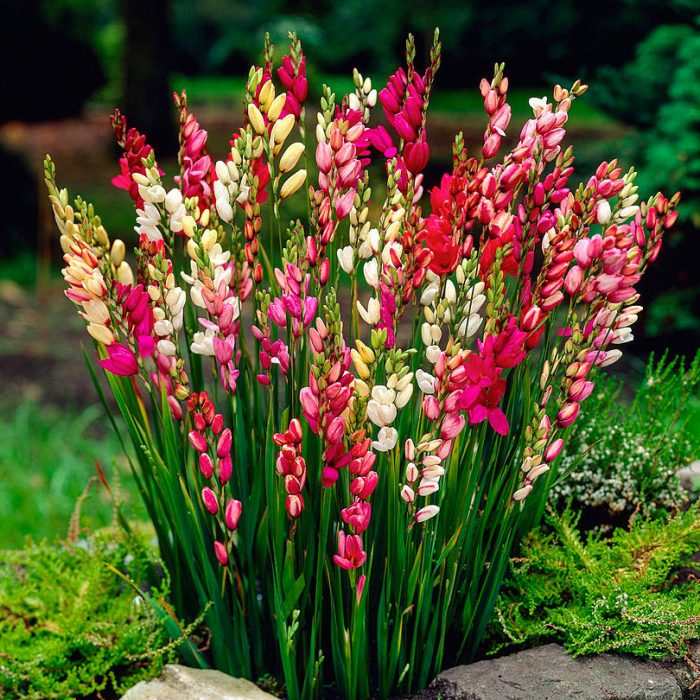
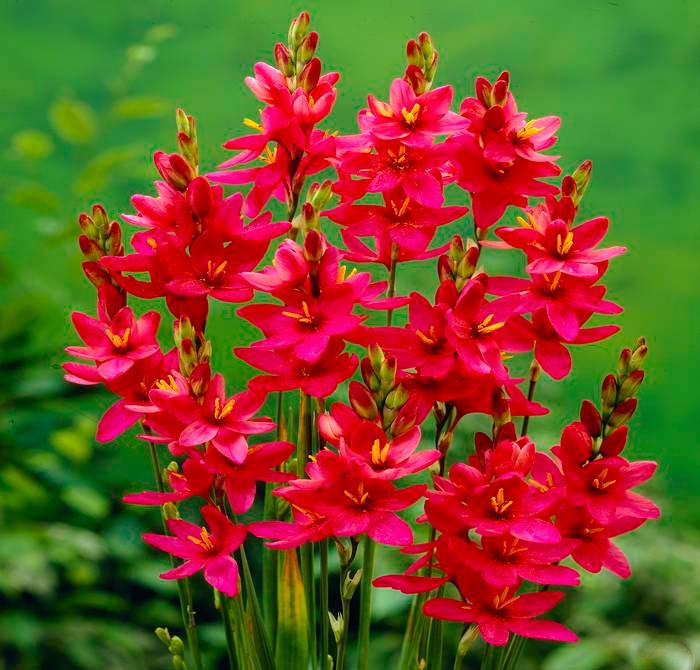
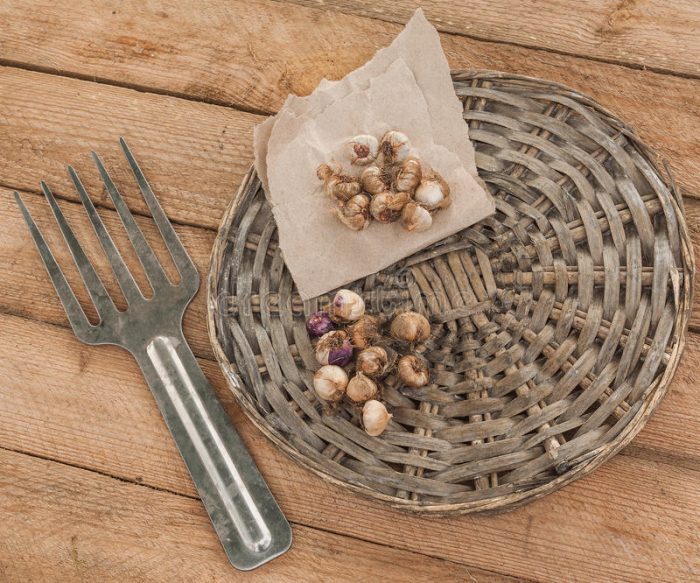
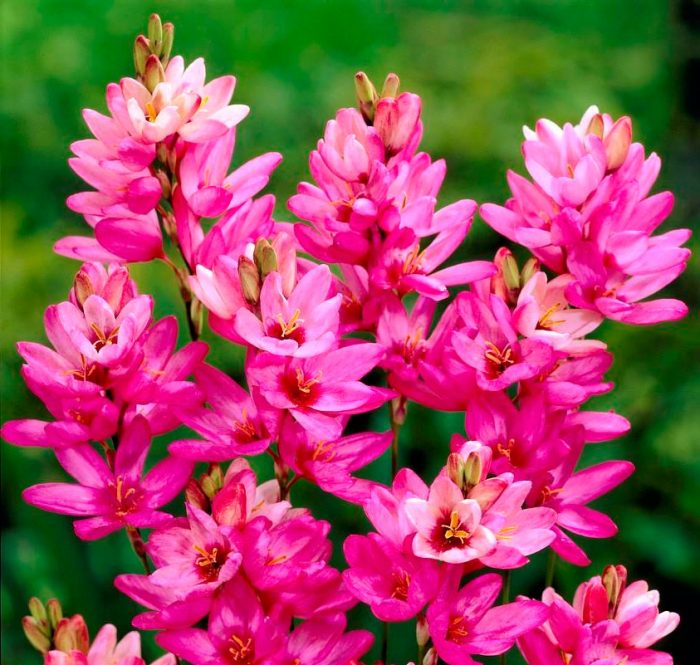
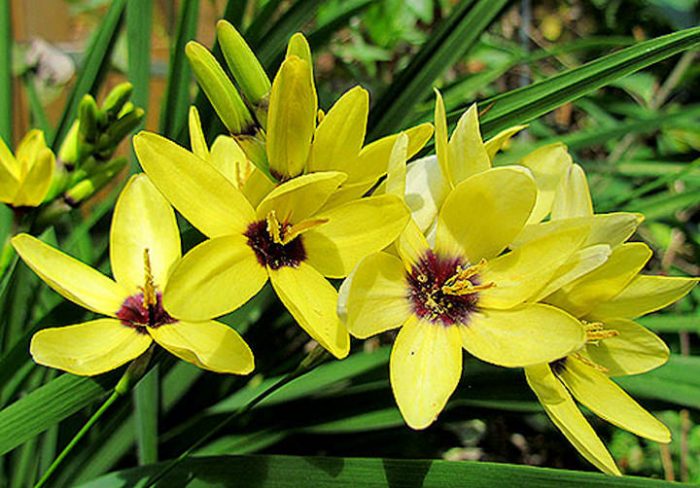
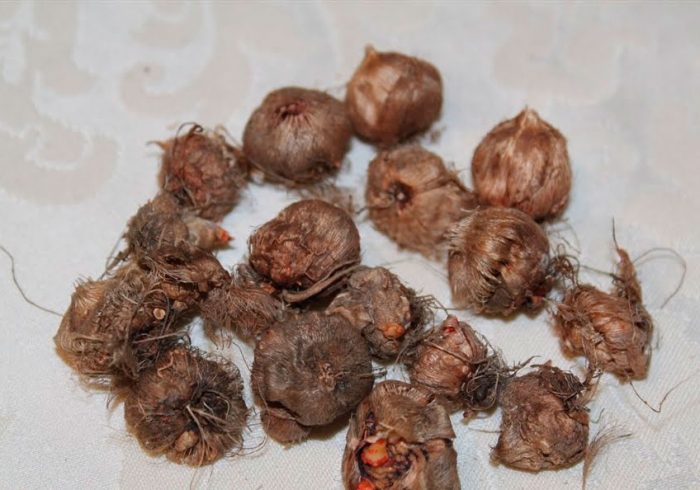
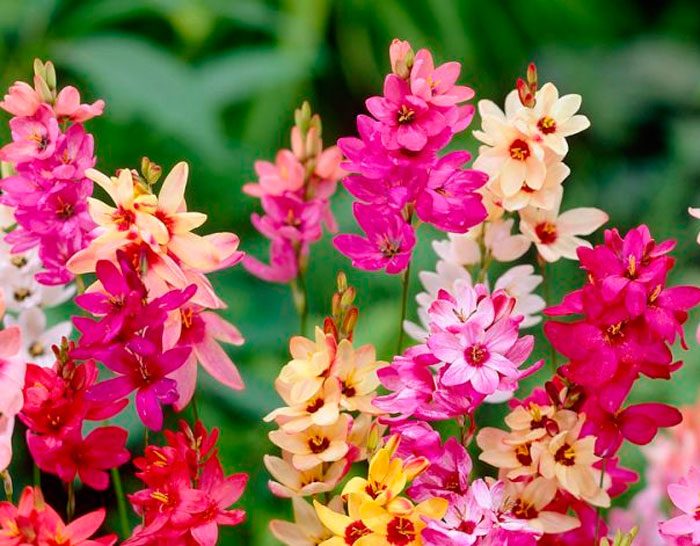

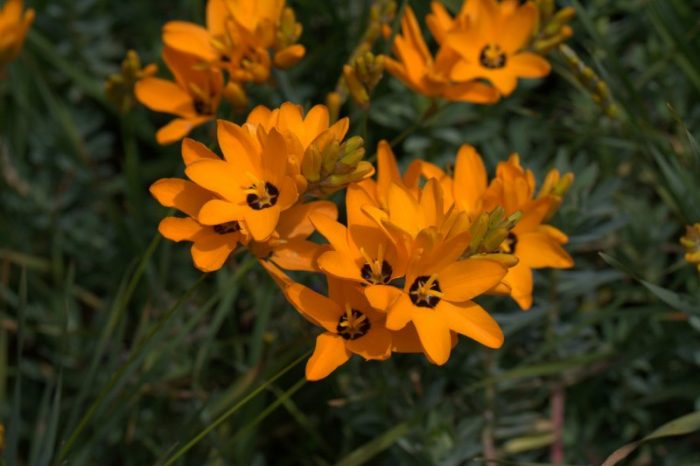
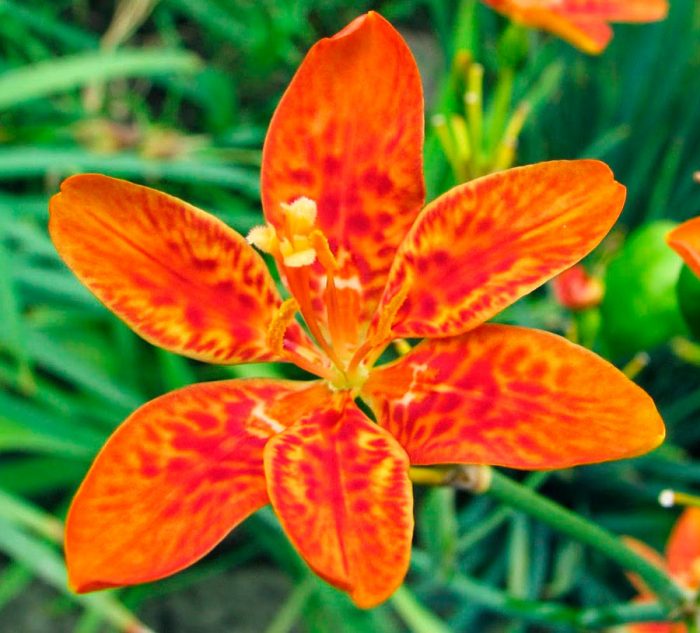
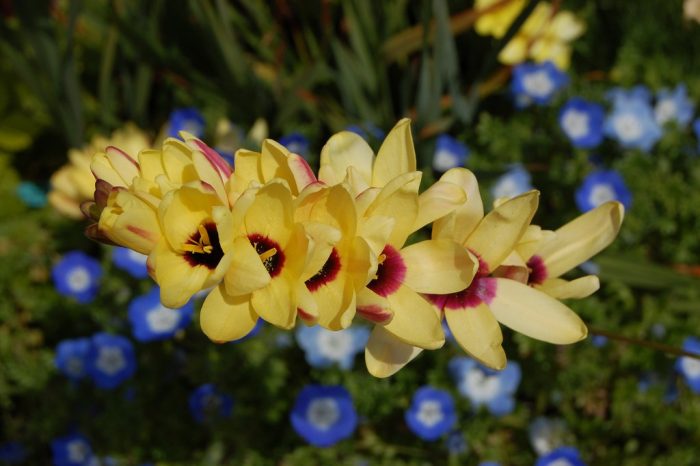
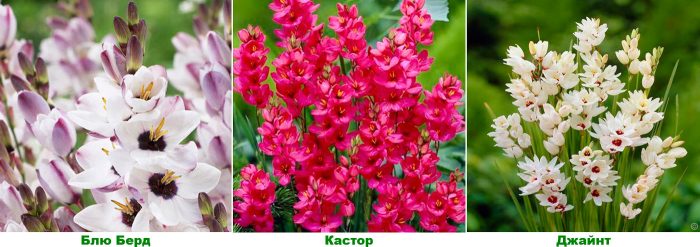
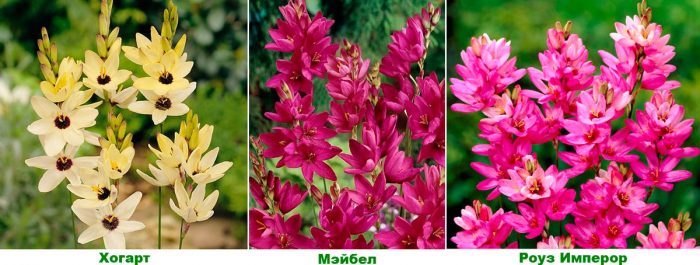




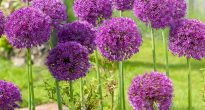





Thank you for the detailed story about Ixia. Where is the best place to order these delicate flowers (planting material)?
I bought at Leroy Merlin